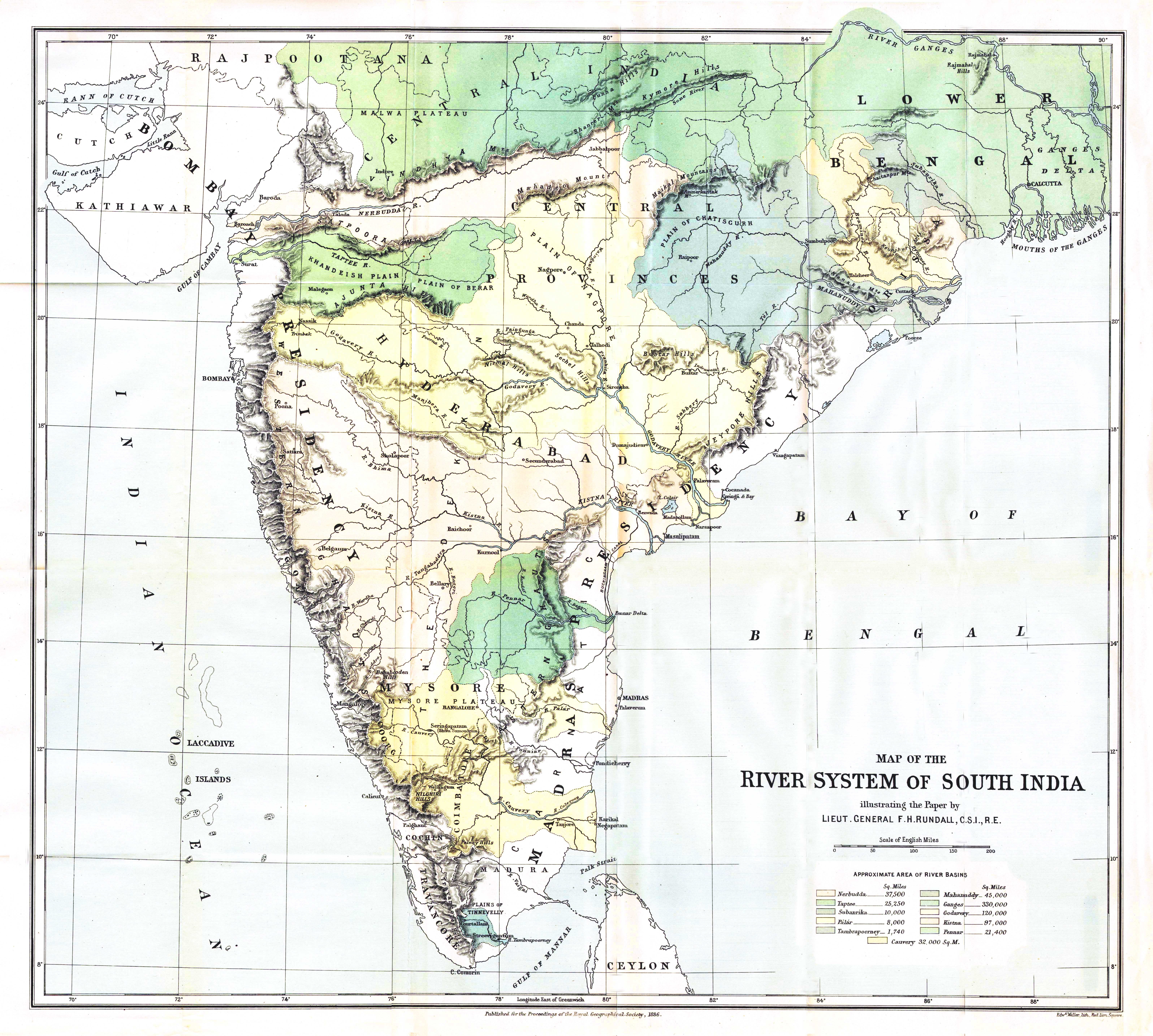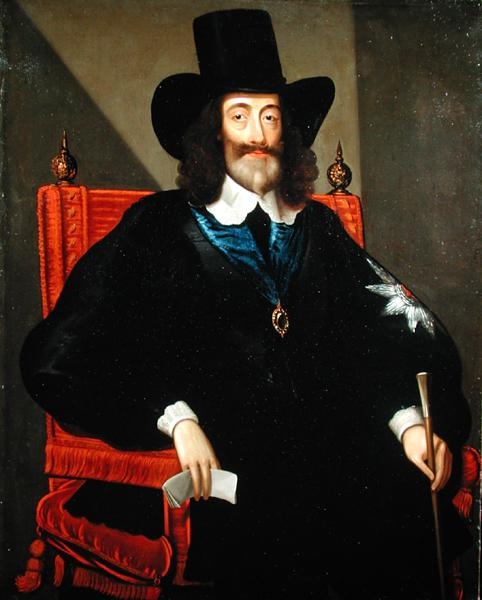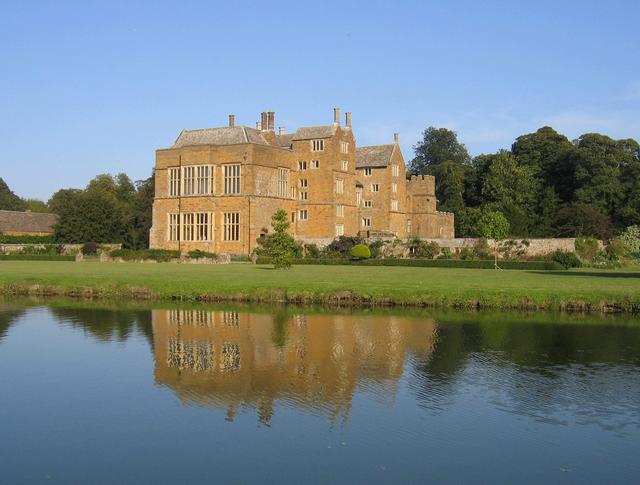|
Siege Of Bristol (1645)
The second siege of Bristol of the First English Civil War lasted from 23 August 1645 until 10 September 1645, when the Royalist commander Prince Rupert surrendered the city that he had captured from the Parliamentarians on 26 July 1643. The commander of the Parliamentarian New Model Army forces besieging Bristol was Lord Fairfax. Context After the Battle of Naseby in June 1645, it was clear that the war had turned decisively in favour of the Parliamentarians. Indeed, by the end of July, Prince Rupert was actively petitioning the king to end the war by treaty. However, Charles believed he had enough men and munitions at his disposal to continue. The holding of Bristol was vital to these plans. In the first instance, it was one of the only ports remaining in Royalist hands. Secondly, Charles had ordered a recruitment drive in Wales, and intended Bristol to be used to receive the raised troops. Indeed he was even considering moving his headquarters from Oxford to Bristol ... [...More Info...] [...Related Items...] OR: [Wikipedia] [Google] [Baidu] |
Edward Weller (cartographer)
Edward Weller (1 July 1819 – May 1884) FRGS was a British engraver and cartographer who was one of the first to produce maps using lithography. He was a "London-based engraver, cartographer and publisher, working from offices in Red Lion Square and later, Bloomsbury", who produced detailed steel plate engraved maps. References External links * 19th-century British cartographers 1819 births 1884 deaths Fellows of the Royal Geographical Society {{cartography-stub ... [...More Info...] [...Related Items...] OR: [Wikipedia] [Google] [Baidu] |
George Goring, Lord Goring
George Goring, Lord Goring (14 July 1608 – 1657) was an English Cavalier, Royalist soldier. He was known by the Courtesy titles in the United Kingdom, courtesy title ''Lord Goring'' as the eldest son of the George Goring, 1st Earl of Norwich, first Earl of Norwich. Early life Goring, the eldest son of George Goring, 1st Earl of Norwich, was born on 14 July 1608. He married Lettice Boyle, the daughter of Richard Boyle, 1st Earl of Cork. Experience before the Civil Wars His father-in-law, Richard Boyle, 1st Earl of Cork, procured for him a post in the Royal Netherlands Army#1572 to 1814, Dutch Army with the rank of colonel. He was permanently lamed by a wound received at the Siege of Breda (1637), Siege of Breda in 1637, and returned to England early in 1639, when he was made governor of Portsmouth. He served in the Bishops' Wars, and already had a considerable reputation when he was involved in the "First Army Plot, Army Plot" (1641). Officers of the army stationed at Y ... [...More Info...] [...Related Items...] OR: [Wikipedia] [Google] [Baidu] |
1645 In England
Events from the year 1645 in England. This is the fourth year of the First English Civil War, fought between Roundheads ( Parliamentarians) and Cavaliers (Royalist supporters of King Charles I). Incumbents * Monarch – Charles I Events * 3 January – the Long Parliament adopts ''Directory of Public Worship, A Directory for the Publique Worship of God throughout the Three Kingdoms of England, Scotland, and Ireland. Together with an Ordinance of Parliament for the taking away of the Book of Common-Prayer, and for Establishing and Observing of this Present Directory throughout the Kingdom of England and the Dominion of Wales'', drawn up by a parliamentary subcommittee appointed by it, replacing the Book of Common Prayer. Holy Days (other than Sundays) are not to be observed. * 10 January – Archbishop of Canterbury William Laud executed for treason on Tower Hill, London. * 14 January – English Civil War: Fairfax appointed Commander-in-Chief. * 29 January–22 February � ... [...More Info...] [...Related Items...] OR: [Wikipedia] [Google] [Baidu] |
Pride's Purge
Pride's Purge is the name commonly given to an event that took place on 6 December 1648, when soldiers prevented members of Parliament considered hostile to the New Model Army from entering the House of Commons of England. Despite defeat in the First English Civil War, Charles I of England, Charles I retained significant political power. This allowed him to create an alliance with Scots Covenanters and Roundhead, Parliamentarian moderates to restore him to the English throne. The result was the 1648 Second English Civil War, in which he was defeated once again. Convinced only his removal could end the conflict, senior commanders of the New Model Army took control of London on 5 December. The next day, soldiers commanded by Colonel Thomas Pride forcibly excluded from the Long Parliament those MPs viewed as their opponents, and arrested 45. The purge cleared the way for the Execution of Charles I, execution of Charles in January 1649, and establishment of the The Protectorate, Pro ... [...More Info...] [...Related Items...] OR: [Wikipedia] [Google] [Baidu] |
Oliver Cromwell
Oliver Cromwell (25 April 15993 September 1658) was an English statesman, politician and soldier, widely regarded as one of the most important figures in British history. He came to prominence during the Wars of the Three Kingdoms, initially as a senior commander in the Parliamentarian army and latterly as a politician. A leading advocate of the execution of Charles I in January 1649, which led to the establishment of the Commonwealth of England, Cromwell ruled as Lord Protector from December 1653 until his death. Although elected Member of Parliament (MP) for Huntingdon in 1628, much of Cromwell's life prior to 1640 was marked by financial and personal failure. He briefly contemplated emigration to New England, but became a religious Independent in the 1630s and thereafter believed his successes were the result of divine providence. In 1640 he was returned as MP for Cambridge in the Short and Long Parliaments. He joined the Parliamentarian army when the First Engl ... [...More Info...] [...Related Items...] OR: [Wikipedia] [Google] [Baidu] |
Nathaniel Fiennes
Nathaniel Fiennes, 1608 to 16 December 1669, was a younger son of the Puritan nobleman and politician, William Fiennes, 1st Viscount Saye and Sele. He sat in the House of Commons of England, House of Commons at various times between 1640 and 1659, and served with the Roundhead, Parliamentarian army in the First English Civil War. In 1643, he was dismissed from the army for alleged incompetence after surrendering Storming of Bristol, Bristol and sentenced to death before being pardoned. Exonerated in 1645, he actively supported Oliver Cromwell during The Protectorate, being Lord Keeper of the Great Seal from 1655 to 1659. Elected to the Long Parliament in November 1640, Fiennes played a leading role in the opposition to Charles I of England, Charles I prior to the outbreak of civil war in August 1642. In the early years of the war, his objections to any form of State religion, established church aligned him with Cromwell and the Independent (religion), Independents, rather than ... [...More Info...] [...Related Items...] OR: [Wikipedia] [Google] [Baidu] |
House Of Commons Of The United Kingdom
The House of Commons is the lower house of the Parliament of the United Kingdom. Like the upper house, the House of Lords, it meets in the Palace of Westminster in London, England. The House of Commons is an elected body consisting of 650 members known as Member of Parliament (United Kingdom), members of Parliament (MPs), who are elected to represent United Kingdom constituencies, constituencies by the First-past-the-post voting, first-past-the-post system and hold their seats until Dissolution of the Parliament of the United Kingdom, Parliament is dissolved. The House of Commons of England began to evolve in the 13th and 14th centuries. In 1707 it became the House of Commons of Great Britain after the Acts of Union 1707, political union with Scotland, and from 1801 it also became the House of Commons for Ireland after the Acts of Union 1800, political union of Great Britain and Ireland. In 1922, the body became the House of Commons of the United Kingdom of Great Britain and No ... [...More Info...] [...Related Items...] OR: [Wikipedia] [Google] [Baidu] |
Chester
Chester is a cathedral city in Cheshire, England, on the River Dee, Wales, River Dee, close to the England–Wales border. With a built-up area population of 92,760 in 2021, it is the most populous settlement in the borough of Cheshire West and Chester. It is also the historic county town of Cheshire and the List of Cheshire settlements by population, second-largest settlement in Cheshire after Warrington. Chester was founded in 79 AD as a "Castra, castrum" or Roman Empire, Roman fort with the name Deva Victrix during the reign of Emperor Vespasian. One of the main army camps in Roman Britain, Deva later became a major civilian settlement. In 689, Æthelred of Mercia, King Æthelred of Mercia founded the Minster Church of West Mercia, which later became Chester's first cathedral, and the Angles (tribe), Angles extended and strengthened the walls to protect the city against the Danes (Germanic tribe), Danes. Chester was one of the last cities in England to Norman conquest of Eng ... [...More Info...] [...Related Items...] OR: [Wikipedia] [Google] [Baidu] |
Whig History
Whig history (or Whig historiography) is an approach to historiography that presents history as a journey from an oppressive and benighted past to a "glorious present". The present described is generally one with modern forms of liberal democracy and constitutional monarchy: it was originally a term for the metanarratives praising Britain's adoption of constitutional monarchy and the historical development of the Westminster system. The term has also been applied widely in historical disciplines outside of British history (e.g. in the history of science) to describe "any subjection of history to what is essentially a teleological view of the historical process". When the term is used in contexts other than British history, "whig history" (lowercase) is preferred. In the British context, whig historians emphasize the rise of constitutional government, personal freedoms and scientific progress. The term is often applied generally (and pejoratively) to histories that present the ... [...More Info...] [...Related Items...] OR: [Wikipedia] [Google] [Baidu] |
George Digby, 2nd Earl Of Bristol
George Digby, 2nd Earl of Bristol (5 November 161220 March 1677) was an English politician and peer who sat in the House of Commons from 1640 until 1641, when he was raised to the House of Lords by a writ of acceleration. He supported the Royalists during the English Civil War, but his ambition and instability of character caused serious problems to himself and both Kings he served. Early life Digby was baptized in Madrid, the eldest known son of John Digby, 1st Earl of Bristol, who for many years was the English Ambassador to Spain, and his wife Beatrice Walcott.Ronald Hutton, ‘Digby, George, second earl of Bristol (1612–1677)’, ''Oxford Dictionary of National Biography'', Oxford University Press, 2004; online edn, May 2009. He is presumed to have been born there shortly before. At the age of twelve, he appeared at the bar of the House of Commons and pleaded for his father who was then imprisoned in the Tower of London. His youth, graceful person and well-delivered spe ... [...More Info...] [...Related Items...] OR: [Wikipedia] [Google] [Baidu] |
Portishead, Somerset
Portishead ( ) is a town and civil parish in the North Somerset unitary authority area, in the county of Somerset, England. With a population of 26,366 at the 2021 Census, the town is located on the Severn Estuary opposite Cardiff and Newport, Wales, Newport in Wales. The town is to the west of Bristol and 18 miles northeast of Weston-super-Mare and approximately 110 miles (180 km) west of London. Portishead has a long history as a fishing port. As a royal manor it expanded rapidly during the early 19th century around the docks, with supporting transport infrastructure. A Portishead power station, power station and chemical works were added in the 20th century, but the dock and industrial facilities have since closed and have been redeveloped into a marina and residential areas. Portishead was also the telephone control centre used by British Telecom (BT) for non-direct dialled calls to maritime vessels, a service known as Portishead Radio. The headquarters of both Avon an ... [...More Info...] [...Related Items...] OR: [Wikipedia] [Google] [Baidu] |
Stapleton, Bristol
Stapleton is an area in the northeastern suburbs of the city of Bristol, England. The name is colloquially used today to describe the ribbon village along Bell Hill and Park Road in the Frome Valley. It borders Eastville to the South and Begbrook and Frenchay to the North. It comprises an eclectic mix of housing mainly from the Victorian, Edwardian, inter-war and late 20th century periods. It is a popular residential area on three counts. It is convenient for the M32 motorway (with rapid access the M4 and M5), it is a semi rural area within two miles of central Bristol and it boasts a popular public school. Stapleton's church is a prominent Bristol landmark, visible from the M32 motorway as motorists pass by. History The name is from the Old English word "stapol" meaning post and "ton" meaning settlement. The antiquary John Weever, quoting the 16th-century Tuscan merchant Lodovico Guicciardini, defined a staple town "to be a place, to which by the prince's authority ... [...More Info...] [...Related Items...] OR: [Wikipedia] [Google] [Baidu] |






